The Maine Technology Institute said this week it received 183 proposals from Maine companies seeking a piece of the $45 million the organization plans to dole out early next year.
The funding, which comes from the Maine Technology Asset Fund 2.0 (MTAF2.0), is a result of the $45 million in general fund bond dollars that were approved by Maine’s voters in June 2017.
The 183 proposals are seeking, in aggregate, $381 million in funding, which means MTI will likely be culling dozens of proposals from its list. The large number of proposals is a result of the low bar MTI set to get more companies into its funnel.
In an effort to deploy MTAF2.0 funds quickly, MTI launched what it called a “Lightning Round” to solicit proposals. The only requirement to participate in the Lightning Round was to submit a 10-slide pitch deck.
The MTAF2.0 funding was set aside for projects that support infrastructure, equipment and technology upgrades (however, this does not include in-house software development—see more below), and that would specifically allow companies to gain and hold market share, increase revenues, expand employment, or preserve jobs. The online portal to submit pitch decks opened on Oct. 2 and closed on Dec 8.
“The incredible demand for these funds is very encouraging and bodes well for Maine’s innovation economy,” Brian Whitney, MTI’s president, said in a statement. “This is an extraordinary example of how government can help create an environment where innovation can thrive in our state. And, as a result, Maine, its economy, and its dreamers and doers, will undoubtedly flourish and prosper from it.”
Funding requests ranged from $18,000 to $45 million and came from “startups to mature industry leaders” throughout the state, Whitney said.
He added: “MTI has received proposals from companies it has never engaged with previously and even from out-of-state and out-of-country enterprises looking to establish a base of operations in Maine.”
MTI said it will complete the evaluation and review of all the proposals by Jan. 16, and will finalize the list of projects invited for further due diligence at that time.
In-house software development not included
Notably, the MTAF2.0 funding is not available for just any technology upgrade. Some companies discovered that their proposals weren’t eligible to receive funding if they were to cover in-house software development.
“Apparently ‘technology’ only applies to hardware in this case,” said Kerry Gallivan, CEO of Chimani, which applied to cover software-related costs and was told by MTI that it wasn’t eligible. “It sounds like several startups aren’t able to to access these funds for similar reasons.”
Whitney confirmed for Maine Startups Insider that in-house software development isn’t eligible to be covered by bond proceeds, but clarified that software being developed by a third party—and not off the shelf—could be paid out of bond proceeds.
Whitney likened the situation to how the Maine Department of Transportation is required to use bond proceeds, with engineering costs incurred by a contractor being eligible, but not the same engineering work done by employees of DOT.
“The software issue is, indeed, a complicated one,” he said. “Given that MTAF is bond funded, the money must be used for capital expenditures (equipment, infrastructure, hardware, bricks and mortar, etc.). We have sought and received guidance from the Attorney General’s office on the matter.”




Pingback: MTI: Funding requests outpace available funds by 1,100% - Maine Startups Insider